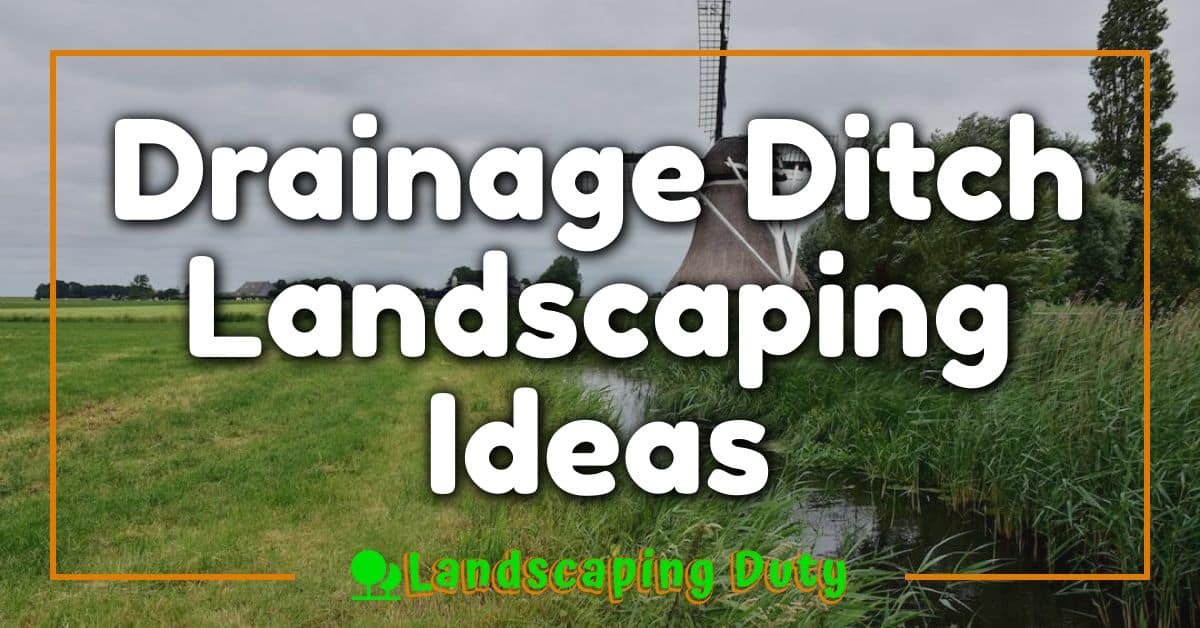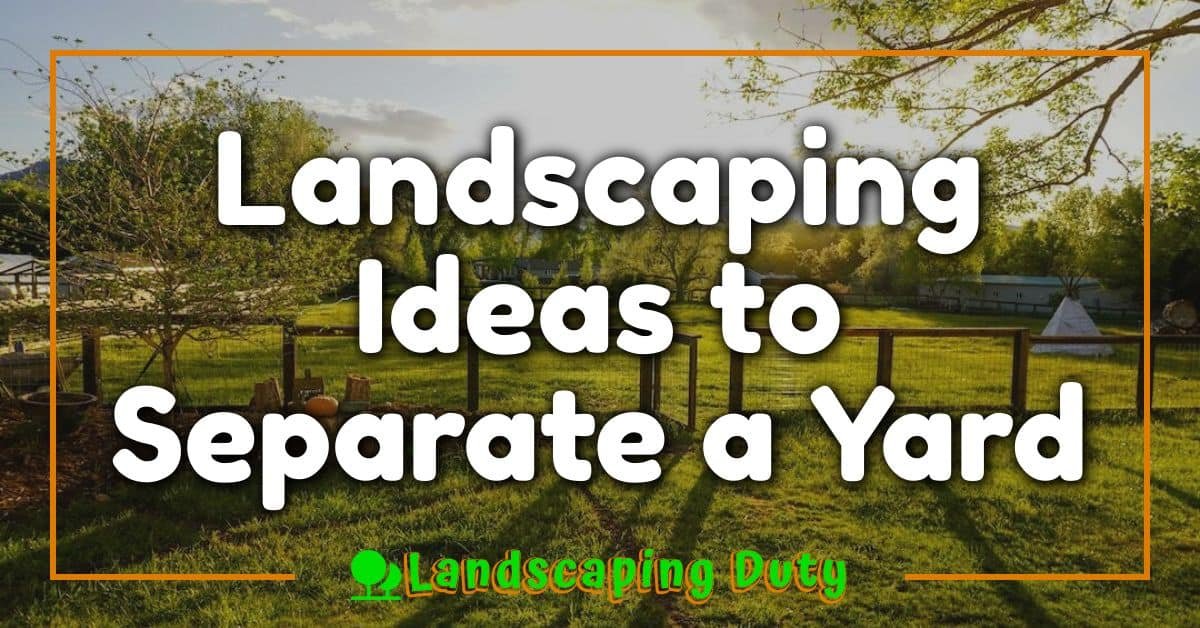Welcome to Wyoming, where the wide-open spaces offer a unique backdrop for your landscaping dreams. You might be thinking, “How can I make my yard standout in such an expansive setting?” Well, you’re in luck! We’ve got some fantastic ideas that’ll help transform your yard into a Wyoming wonderland.

First off, let’s talk about native plants. When planning your landscape design, it’s always a good idea to include indigenous species. Not only do they thrive in local conditions with little fuss but they also add an authentic touch of Wyoming’s natural beauty to your space.
Next up is incorporating natural stone elements. This could range from large boulders for dramatic effect to smaller pebbles lining garden paths. Just imagine how stunning the sunset would look reflecting off these stones! It’s all about embracing what’s naturally around you and integrating it into your own personal backyard oasis.
So there you have it – start with native plants and natural stone elements and you’ll already be well on your way towards creating a breathtaking Wyoming-inspired landscape right in your own backyard!
Understanding Wyoming’s Unique Climate
Wyoming, isn’t it unique? We’re not just talking about Yellowstone National Park or the stunning Grand Tetons here. No, we’re diving into something a bit more subtle yet equally important – its climate. Wyoming’s weather can be a real wild card and understanding it is crucial if you want to create a thriving landscape for your yard.
Here’s the scoop: Wyoming has a semi-arid continental climate. That means you’ll experience cold winters and warm summers. But wait, there’s more! The state is also known for its unpredictable weather changes. One moment it’s sunny, next thing you know, clouds are rolling in with strong winds on their tail.
Let’s take a peek at some numbers:
| Average Summer Temperature | Average Winter Temperature |
|---|---|
| 80-90°F | 20-30°F |
What does this mean for your landscaping project? Well, native plants have adapted to these conditions and they should be your go-to choices when planning out your garden.
Speaking of native plants, they come with another big advantage – water efficiency! In case you didn’t know, Wyoming gets less rainfall than most U.S states. On average it receives only about 12-15 inches per year.
So what can you do?
- Choose drought-tolerant plants like Sagebrush or Indian Paintbrush.
- Consider xeriscaping – that’s gardening with low-water-use plants.
- And remember to mulch – it conserves moisture and suppresses weeds!
Now that we’ve peeled back the layers of Wyoming’s unique climate, aren’t you excited to put this knowledge into action? Your beautifully landscaped yard will not only add aesthetic appeal but also contribute positively towards local biodiversity by supporting indigenous plant species. Happy planting!
Choosing the Best Plants for Wyoming Landscapes
Let’s talk about choosing the best plants for your Wyoming landscape. Now, you might be wondering what makes a plant perfect for this region? The answer is not as complicated as it may seem! It all comes down to understanding the climate and soil of Wyoming.
Dubbed as “Forever West,” Wyoming embodies an arid climate with cold winters and hot summers. For those unfamiliar with gardening lingo, this means you’re dealing with USDA hardiness zones 4-5, depending on where exactly you’re located within the state. What does that mean for you? Well, it translates into picking out plants that can not only survive but thrive in these conditions.
So let’s dive right in!
- Perennials: You can’t go wrong with perennials like Coneflowers or Blanket Flowers. These beauties are not just pleasing to look at but they’re also pretty tough, handling both drought and frost like champions.
- Shrubs: Your landscape can benefit from resilient shrubs such as Sagebrush or Sumac which provide year-round visual interest.
- Trees: As far as trees go, Ponderosa Pines or Bur Oaks are excellent choices providing grandeur while being low-maintenance.
Now here’s something interesting – did you know that native plants often prove to be better choices when landscaping in Wyoming? They’ve adapted over time to local conditions making them more resistant to pests and diseases compared to non-native species.
Consider the Indian Paintbrush or Prickly Pear Cactus – two beautiful examples of native flora. Not only do they add a unique touch to your yard but they also play a part in preserving the ecological balance by attracting local pollinators!
Remember though – while these suggestions are backed by horticulture practices specific to Wyoming’s harsh climates, everyone’s garden is unique! So don’t hesitate to experiment until you find the perfect blend of plants that suits your personal style and thrives in your landscape.
Here’s hoping our little guide helps you transform your yard into a Wyoming wonder!
Incorporating Native Wyoming Plant Species in Your Yard
Wondering how to add a touch of Wyoming’s natural beauty to your yard? You’re on the right track! There’s something special about using native plants. They not only make your yard look authentic, but they’re also more likely to thrive since they’re adapted to local conditions.
« California Xeriscape Ideas: Your Ultimate Guide to Water-Saving Landscaping Yard Landscaping Ideas in Hawaii: Transform Your Outdoor Space Into a Tropical Paradise »
Let me introduce you to a few of the stars of Wyoming’s plant world:
- Sagebrush (Artemisia tridentata): This is not just any ordinary bush. It’s Wyoming’s state shrub for good reason! With its silvery-green leaves and sweet, earthy fragrance, sagebrush will lend your landscape an iconic Western vibe.
- Indian Paintbrush (Castilleja linariifolia): Here’s one that’ll light up your garden with bursts of red and orange. Fun fact – it’s also the state flower!
- Bitterroot (Lewisia rediviva): Looking for something low maintenance? Bitterroot could be perfect. It’s a hearty little plant that survives harsh conditions and rewards you with gorgeous pink flowers in spring.
But don’t think these are all that Wyoming has to offer! The state boasts over 2500 species of wildflowers alone.
And now comes the question – where should you place these plants in your yard? Well, it depends on their individual needs and characteristics. For example, Sagebrush prefers sunny spots while Indian Paintbrush does well under partial shade too. Research each plant before deciding where it would fit best in your layout.
Remember, incorporating native plants into your design isn’t merely about aesthetics; it’s an act of environmental stewardship as well. By choosing indigenous species, you’re promoting biodiversity and conserving water resources since these flora require less watering than their non-native counterparts.
So go ahead – give those out-of-state exotic plants a break! Sprinkle some local charm into your yard with Wyoming’s native blooms. Your yard, and the environment, will thank you for it!
Designing a Drought-Tolerant Landscape in Wyoming
When you’re living in a place like Wyoming, it’s crucial to consider the climate while planning your landscape. This state is known for its dry weather and low precipitation levels. So, how can you craft an outdoor space that’s both beautiful and resistant to these harsh conditions? Let me guide you through some ideas.
First off, choosing native plants that are drought-resistant is key. Plants such as the Blue Flax or the Rocky Mountain Penstemon not only survive but thrive in the arid Wyoming climate. They’ve adapted over centuries to endure long periods without water, making them perfect for your yard.
Of course, selecting the right plants isn’t enough. You’ll also have to consider proper soil management. Did you know that adding compost or organic matter to your soil improves its ability to hold water? It’s true! By enhancing your soil’s capacity for water retention, you provide a buffer during those hot summer months when rain seems more like a myth than a reality.
Now let’s talk about efficient watering techniques. Drip irrigation systems are quite popular among savvy gardeners for their efficiency and effectiveness in arid climates. These systems deliver slow drips of water directly at the base of each plant thereby minimizing wastage through evaporation or runoff.
But landscaping isn’t just about plants and watering methods; hardscaping elements can be equally beneficial! Incorporating features like stone paths or decorative rocks can add aesthetic value while reducing areas requiring regular irrigation.
So here we go – from picking resilient native flora, improving soil fertility to smart watering solutions and strategic hardscaping – these tips should give you a good headstart on designing your very own drought-tolerant landscape in Wyoming!
Creating Wildlife-Friendly Spaces in Your Yard
You’ve decided to take the leap and transform your Wyoming yard into a haven for wildlife, huh? That’s fantastic news! But where do you start? Well, don’t worry. You’re about to learn some handy tips that’ll help you on your journey.
First up, let’s tackle the basics. Start by selecting native plants for your landscape. Why’s that important? It’s simple really – native plants are already adapted to local conditions and they provide the ideal food and shelter for local wildlife species. So if you want those beautiful Wyoming birds chirping away in your backyard, this is step one!
The next move in designing a wildlife-friendly yard is water availability. Animals need it as much as we do! So adding a small pond or birdbath can instantly make your space more inviting to creatures big and small.
Now let’s talk about shelter. No, we’re not suggesting you invite squirrels into your living room! Rather, consider planting dense shrubs or creating log piles where critters can hide from predators and harsh weather.
And hey, ever thought about getting certified? The National Wildlife Federation offers a certification program for homeowners who have successfully created an environment conducive for wildlife. The criteria includes providing clean water sources, offering plenty of food through native vegetation, ensuring adequate cover (think shrubs and trees), providing places for animals to raise their young (like nesting boxes), and practicing sustainable gardening methods.
Finally, keep things natural as much as possible. This means limiting the use of pesticides which can harm both wildlife and beneficial insects in your garden.
So there you go – a few simple steps towards making a real difference right outside your doorstep. And remember – every little change helps promote biodiversity within our communities!
Practical Tips for Maintaining Your Wyoming Landscape
Hey there, green thumb! If you’re looking to keep your Wyoming landscape in top-notch condition, then you’ve come to the right place. Let’s dive into some practical tips that’ll help maintain your yard throughout the year.
First things first, let’s talk about watering. In Wyoming, we experience a fair share of dry weather. This can be tough on our plants and lawns. So it’s essential to keep them hydrated properly. But remember not to overwater either – it could lead to root rot or other diseases.
Next up is weed control – nobody likes those pesky intruders! Weeds compete with your plants for resources and can quickly take over if left unchecked. Regularly check your garden and pluck out any weeds you see before they have a chance to spread.
Here’s something that might surprise you – mulching isn’t just for aesthetics! It helps retain soil moisture, suppresses weeds, and even adds nutrients back into your soil as it decomposes. Consider using organic mulch like wood chips or straw in your Wyoming landscape.
Speaking of nutrients, don’t forget about fertilizing! Your plants need a balanced diet too. Look for a fertilizer that contains nitrogen (N), phosphorus (P), and potassium (K) – these are key nutrients that most plants need.
And lastly but certainly not least – pruning! It may seem counterintuitive but cutting back dead or diseased branches actually promotes new growth and keeps the plant healthy overall.
- Watering: Keep an eye on rainfall levels and water accordingly.
- Weed Control: Regular checks will prevent weed infestations.
- Mulching: A double-duty solution – looks good AND supports plant health!
- Fertilizing: Find a balanced fertilizer for optimal growth.
- Pruning: Don’t shy away from trimming back when needed!
There you go – armed with these practical tips, you’re sure to have a Wyoming landscape that’s both stunning and healthy!
Case Study: Successful Yard Landscaping Projects in Wyoming
Let’s dive right into some inspiring success stories of yard landscaping projects in Wyoming. You’ll be amazed at how these spaces have been transformed, all thanks to the clever use of native plants, balance with nature and a dash of creativity.
Have you heard of that beautiful property tucked away in Casper? The owners embraced the wild west style by incorporating local boulders into their design along with a variety of indigenous shrubs. They made sure their garden was drought-friendly too! Truth is, they’ve got one eye on style and the other on sustainability.
Now let’s whisk you away to another stunning zone – Cheyenne. Here we have an example where simplicity reigns supreme. Highlighting natural grasses and using winding pathways, this yard showcases how less can indeed be more when it comes to outdoor space makeovers.
And who could forget about that magical place nestled in Jackson? It’s like walking into a real-life fairy tale with its colorful perennial borders and charming picket fences. What sets this project apart? Its perfect blend with the surrounding wildlife habitat while still offering privacy for homeowners.
- Casper: Embraced local elements (boulders, native shrubs), Drought friendly
- Cheyenne: Simplicity emphasized (Natural grasses, winding pathways)
- Jackson: Colorful perennials, Picket fences
Each story here is unique but what ties them together is their respect for Wyoming’s natural beauty and climate conditions. It’s not just about aesthetics but also practicality – marrying form with function if you will!
Remember folks! Your yard isn’t just an extension of your home; it’s also your personal canvas waiting to showcase your creativity while paying homage to Wyoming’s innate charm.
Conclusion: Embracing the Beauty of Wyoming in Your Yard
You’ve journeyed with us through the open ranges, rocky mountains, and verdant forests of Wyoming, all without leaving your own backyard. Now it’s time to tie it all together.
First off, let’s remind ourselves why we love Wyoming so much. It’s not just the breathtaking vistas or crystal-clear rivers. It’s that undeniable spirit of freedom, resilience, and natural beauty that makes us proud to call this place home. That same spirit should permeate every inch of your yard.
Your landscaping choices can reflect this pride beautifully. You might opt for native plants like Indian Paintbrush or Sagebrush. These hardy species not only survive but thrive in our sometimes harsh climate – a true testament to Wyoming grit.
Remember our discussions about rock gardens? They’re a wonderful way to pay homage to our state’s abundant geological features while keeping maintenance low-key. How about adding a small water feature? It could mirror those tranquil mountain streams you love so much.
Here’s a quick recap on some key pointers:
- Use native plants.
- Consider installing rock gardens.
- Add water features where possible.
- Always consider local wildlife in your planning.
Don’t forget that landscaping isn’t just about aesthetics; it has practical benefits too! A well-planned yard can deter pests, improve air quality and even increase property values over time!
But most importantly, creating a Wyoming-inspired landscape means crafting an outdoor space where you’ll love spending time—whether you’re gardening on warm summer mornings or sitting by the fire pit on crisp fall nights.
So go ahead! Roll up your sleeves and start transforming your yard into a little piece of paradise inspired by everything that makes Wyoming so special. We guarantee you’ll be grinning from ear to ear each time you step outside!












